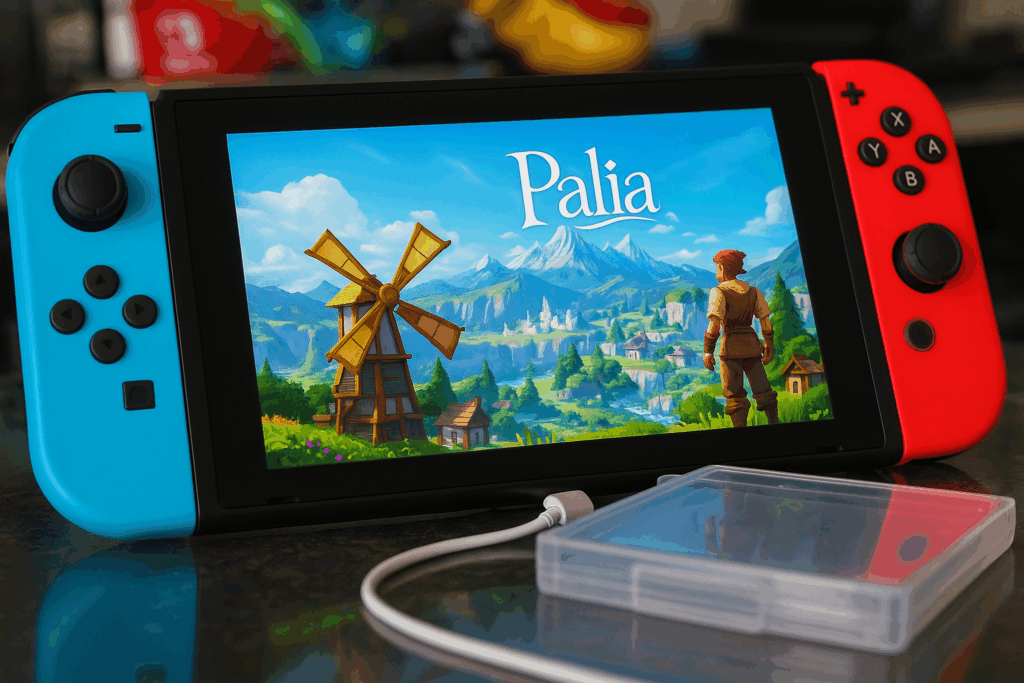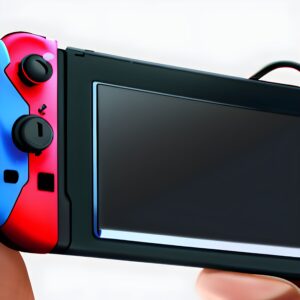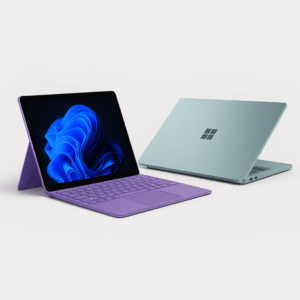Nintendo Eyes 15M Switch 2 Sales in Cautious Forecast

Introduction: A New Console, a Measured Forecast
In a recent announcement, Nintendo projected that its upcoming gaming console, the Nintendo Switch 2, would sell approximately 15 million units by March 2026. Despite the enthusiastic market response and a string of strong pre-orders, the forecast was described as cautiously optimistic. This measured outlook arrives amid broader economic uncertainties, including the potential for U.S. tariffs on Chinese electronics and the ongoing global supply chain constraints.
Though the number may appear conservative when compared to previous console launches, it has been carefully calculated to reflect both market enthusiasm and underlying challenges. In doing so, Nintendo has positioned itself as prepared yet prudent in its ambitions for the Switch 2.
Nintendo Switch 2 Launch Details
According to Nintendo’s official announcement, the Switch 2 will officially launch on June 5, 2025. It will debut with a standard model priced at $449.99 in the U.S., and an additional limited-edition launch bundle will be offered for $499.99. This special edition includes a digital copy of the new “Mario Kart World,” which is expected to be one of the system’s flagship titles.
Although the bundle is set to be available only through Fall 2025, it has already captured the attention of longtime Nintendo fans and new gamers alike.
The company has confirmed that the new console will be available at leading U.S. retailers including Walmart, GameStop, Best Buy, and Target. However, most pre-order listings sold out almost instantly, reflecting the intense demand that Nintendo now faces leading up to the official launch.
Overwhelming Global Pre-Order Demand
Even before its release, the Nintendo Switch 2 has generated considerable excitement. When pre-orders opened in late April, nearly every major U.S. retailer saw their inventory depleted within hours. Retailers reported record-breaking traffic and sales volumes as eager fans rushed to secure the console.
In Japan, the scale of interest was even more striking. Nintendo reported that over 2.2 million pre-order applications had been submitted via its My Nintendo Store. This number dramatically exceeds Nintendo’s original domestic allocation for the launch period, highlighting a level of demand that is reminiscent of the Wii and the original Switch’s debuts.
While this global enthusiasm points to healthy market demand, it has also created a logistical challenge for the company. Thus, Nintendo’s forecast of 15 million sales has been made with supply limitations and regional production adjustments in mind.
Why Nintendo is Playing It Safe
Nintendo’s cautious projection is based on a variety of economic and operational factors. Although the Switch 2 has shown early signs of strong sales performance, global economic conditions have compelled the company to adopt a measured stance.
1. Potential Trade Tariffs
With the United States considering new tariffs on electronic imports from China, Nintendo is facing uncertainties that could significantly impact its cost structure. To reduce exposure to this risk, the company has proactively shifted parts of its manufacturing operations to Vietnam and Cambodia. This strategy aims to diversify its production footprint and mitigate potential losses from increased import costs.
2. Supply Chain Management
Like many other global manufacturers, Nintendo continues to navigate the effects of pandemic-era disruptions in the global supply chain. While many of the worst bottlenecks have improved, component shortages, especially for advanced chips and display parts, continue to influence Nintendo’s ability to produce consoles at full capacity.
3. Consumer Spending Trends
Economic uncertainty is not limited to manufacturing. With inflation affecting consumer spending across many regions, Nintendo’s forecast appears designed to be realistic rather than aspirational. The company is aware that not every household may be ready to adopt a new gaming console at a premium price point.
Switch 2 Hardware and Features
The Nintendo Switch 2 is not simply an incremental upgrade; it marks a significant leap forward in terms of hardware performance, visual fidelity, and hybrid gaming capabilities.
Key hardware improvements include:
-
A 7.9-inch LCD display with 1080p resolution and a 120Hz refresh rate
-
Docking support with 4K output, offering a true home-console gaming experience
-
New and improved Joy-Con controllers, which have been redesigned for better ergonomics and reduced drift issues
-
A faster processor and expanded RAM, enabling more graphically intensive games and quicker load times
-
Backward compatibility with most existing Switch games, ensuring that players will retain access to their digital libraries
The console also retains its hybrid functionality, allowing users to switch between handheld, tabletop, and docked modes seamlessly—one of the original Switch’s most beloved features.
Game Library and Software Sales Expectations
Beyond hardware, Nintendo expects its software to play a central role in driving Switch 2 adoption. The company has projected the sale of approximately 45 million units of software for the new console during the first fiscal year.
Among the most anticipated launch and early-window titles are:
-
Mario Kart World – A major evolution of the long-running franchise
-
The Legend of Zelda: Echoes of the Kingdom – A spiritual successor to Breath of the Wild and Tears of the Kingdom
-
Pokémon Eclipse – A new-generation Pokémon game exclusive to Switch 2
-
Metroid Dread II – A sequel to the critically acclaimed Metroid Dread
-
A host of third-party releases, including ports and exclusives from studios like Square Enix, Ubisoft, and Capcom
These titles are expected to attract both long-time fans and new users, ensuring that the console ecosystem remains vibrant throughout the launch period and beyond.
Financial Outlook and Operating Profit Projections
Despite a recent dip in performance, Nintendo remains confident about the coming fiscal year. In the company’s earnings call held on May 7, 2025, executives revealed that operating profit for the previous fiscal year had fallen by 46.6%, primarily due to declining sales from the aging original Switch and its game catalog.
However, with the Switch 2 launch, the company anticipates a 13% increase in operating profit, projecting ¥320 billion (approximately $2.22 billion) by March 2026. This growth is expected to be driven by:
-
Strong early hardware sales
-
Robust first-party and third-party software performance
-
The sustained revenue from Nintendo Online and Switch Expansion Pack subscriptions
-
Revenue from merchandise, licensing, and theme park partnerships
Regional Performance and Distribution Strategy
Nintendo has historically seen its strongest markets in Japan, North America, and Western Europe. For the Switch 2, the company is implementing a region-optimized release strategy that aligns supply availability with historical demand data.
In North America, pre-orders have been heavily concentrated around metropolitan areas, prompting Nintendo to increase distribution to major cities. In Japan, the company has opted to use a lottery system to ensure fair distribution of units, preventing scalpers from hoarding stock.
Additionally, Nintendo has partnered with select e-commerce platforms and brick-and-mortar stores to offer incentives for in-store pickup, thereby reducing delivery bottlenecks and improving customer satisfaction.
Challenges Ahead
Even as the outlook remains positive, Nintendo is not without its challenges. Several potential risks could affect its ability to meet the 15 million-unit goal:
-
Production Delays: If chip shortages worsen, production timelines may slip.
-
Tariff Uncertainty: Changes in trade policy could force price increases.
-
Scalper Activity: High pre-order demand has already led to concerns about bots and resellers.
-
Competitor Releases: Sony and Microsoft are expected to announce refreshed versions of their consoles, possibly impacting consumer interest in the Switch 2.
A Balanced Bet on the Future
Nintendo’s 15 million sales forecast for the Switch 2 represents a balanced and data-informed approach to what may become one of the company’s most successful launches. While demand is undoubtedly high, Nintendo is choosing to emphasize stability and sustainability rather than lofty predictions.
This cautious optimism has resonated with investors, gamers, and analysts alike, positioning Nintendo as a company that not only recognizes its strengths but also respects the complex global environment in which it operates.
By maintaining a clear focus on hardware innovation, game quality, and regional flexibility, Nintendo appears ready to usher in the next generation of hybrid gaming—one careful, calculated step at a time.
Feel free to check out our other website at : https://synergypublish.com




